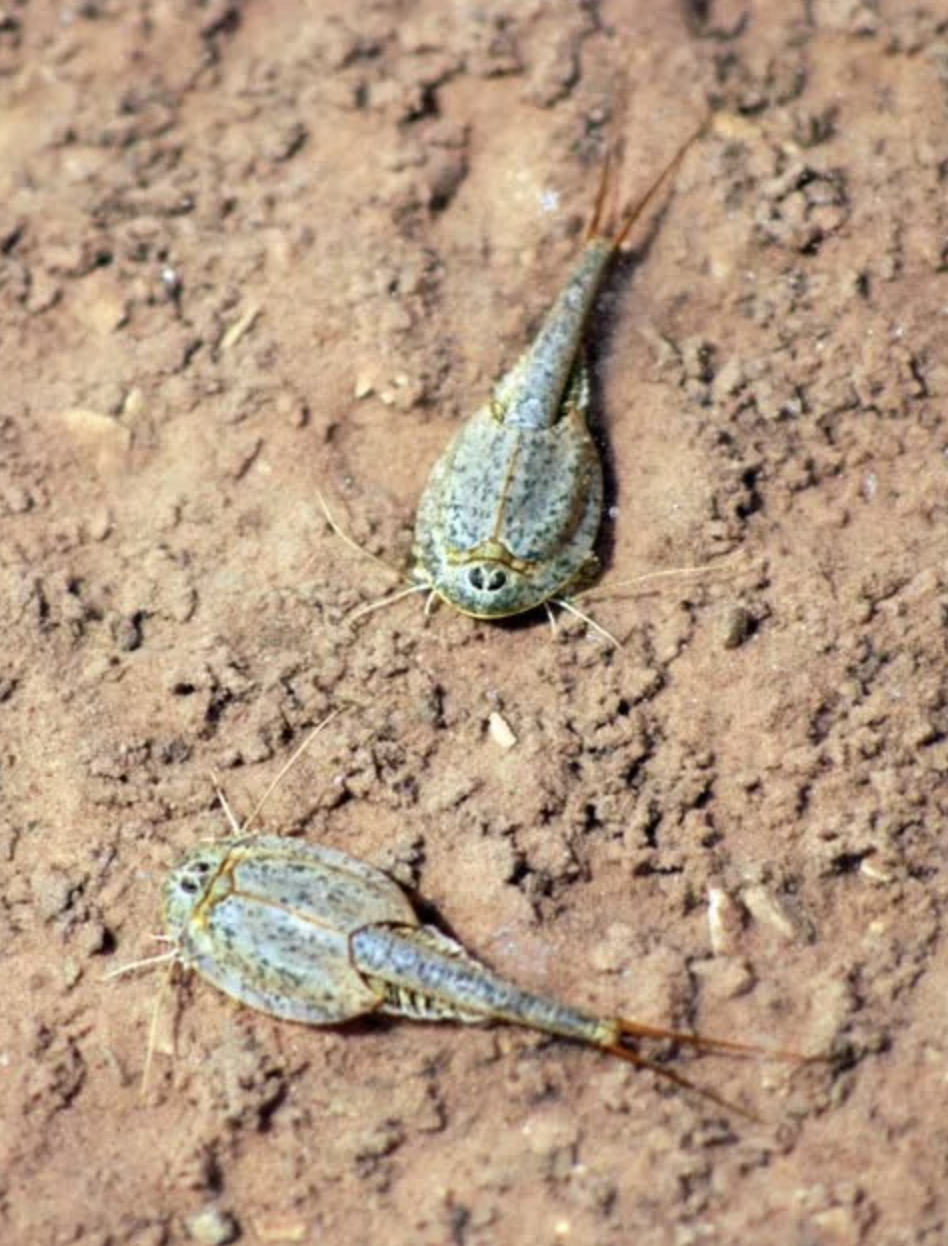Monsoon season is in full swing. In addition to flash floods and ephemeral waterfalls, Moabites can add something new to their monsoon bucket lists: spotting tadpole shrimp. These crustaceans have been around for 220 million years, making them the oldest living creature on Earth. They make their home in temporary ponds around the world, including in the sandstone potholes common in Moab. During the monsoon season, the tadpole shrimp come to life.
Tadpole shrimp closely resemble tadpoles and horseshoe crabs: they have a shell on their back and long tail used for swimming and can grow up to four inches in length. The shrimp have incredibly quick and short lifespans—according to Lauren Wimbish, an interpretive ranger at Canyonlands National Park, tadpole shrimp have a lifespan of only 40 to 70 days.
When a pothole fills up with water during or after a rainstorm, the shrimp hatch from eggs left over from the last wet period. They then rush to grow to adulthood, breed, and lay eggs before the pothole dries again.
“Their whole life is a race against the clock,” Wimbish said.
Though the shrimp themselves can’t survive without water, their eggs can: tadpole shrimp eggs can lie dry and dormant on the bed of a pothole for up to fifty years, losing 92% of their water content, and still be able to hatch. And some of the eggs aren’t triggered right away—some eggs will only hatch on the second or third time they’re exposed to water.
But life isn’t blissful in the potholes—the shrimp face a number of challenges, Wimbish said. Due to the nature of rainstorms in the desert, and the dry heat of summer, potholes can sometimes dry up within hours. At their fastest, tadpole shrimp can hatch and begin growing within 48 hours, Wimbish said, but they typically take seven days to reach full maturity. Adult shrimp also face predators: birds will target potholes to snack on both tadpole shrimp and their eggs.
“We have also observed cannibalism in tadpole shrimp before,” Wimbish said. “So they definitely do have their challenges.”
Park rangers urge visitors not to touch the ponds: any outside disturbance could impact the tiny ecosystem within. Even when potholes are dry, disturbing the area inside it could crush or remove the crustacean eggs waiting to come alive again.
The best way to observe tadpole shrimp, and their pothole companions, is to find a recently filled pothole—potholes are common in Sand Flats Recreation Area, Arches National Park, and Canyonlands National Park, where the 0.6-mile trail “Pothole Point” is located.




